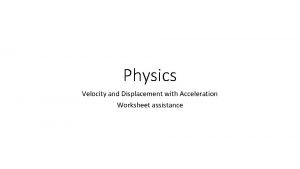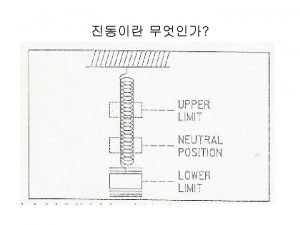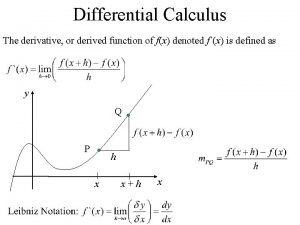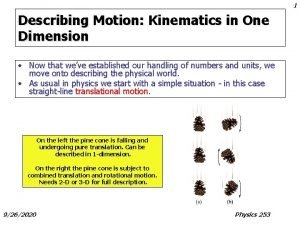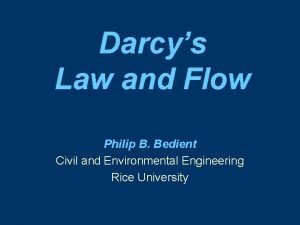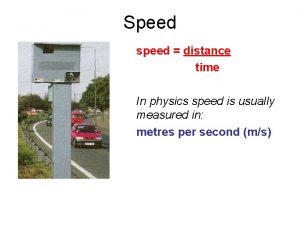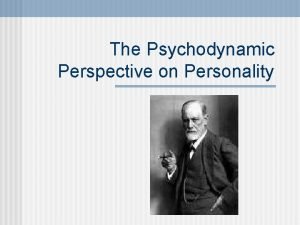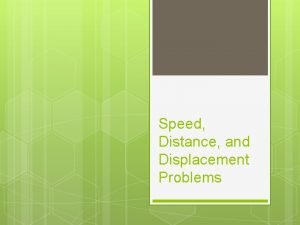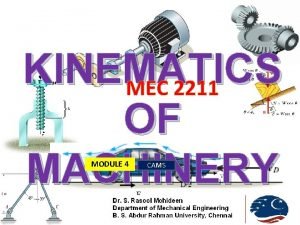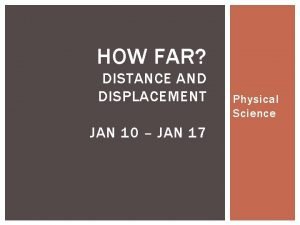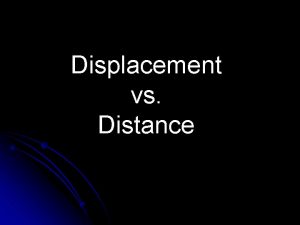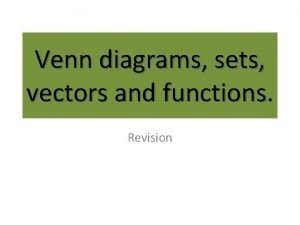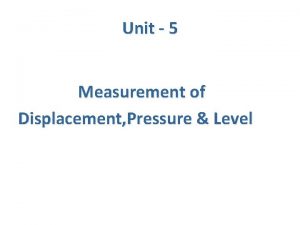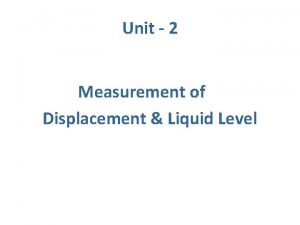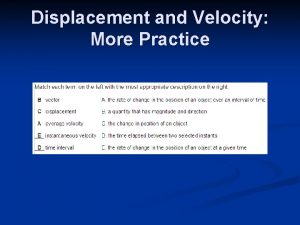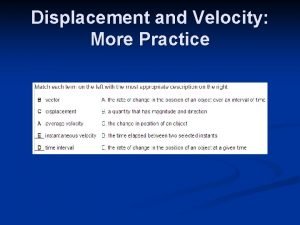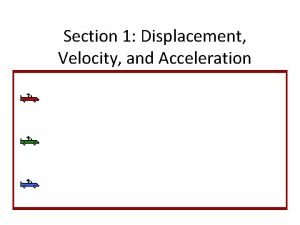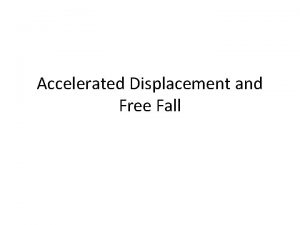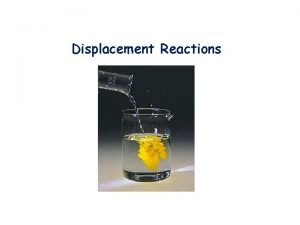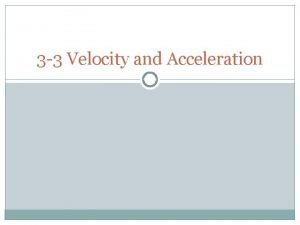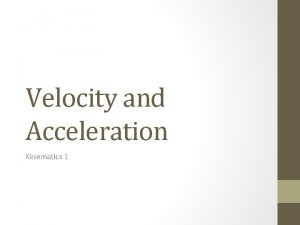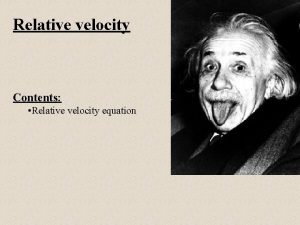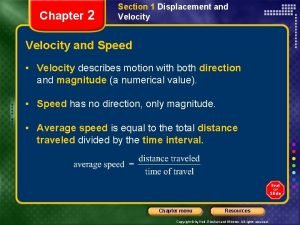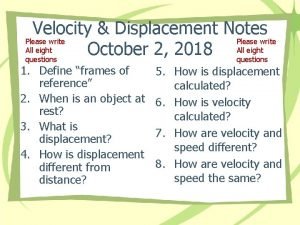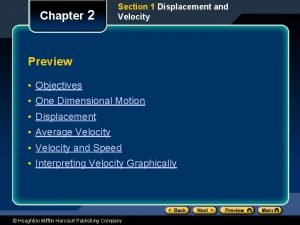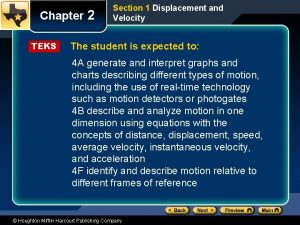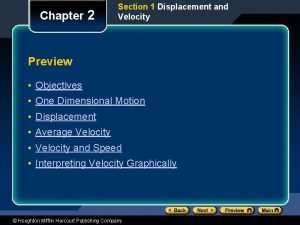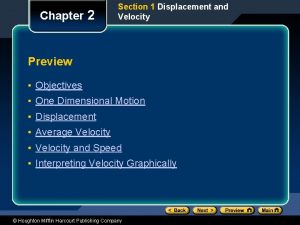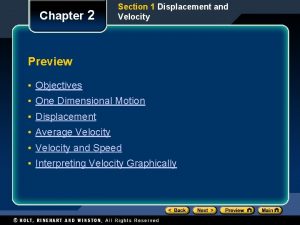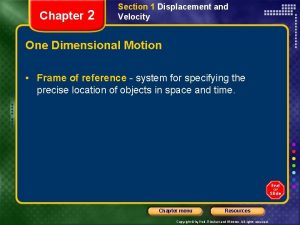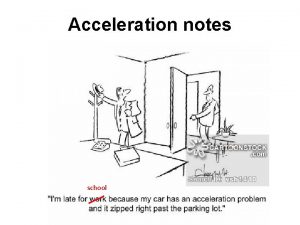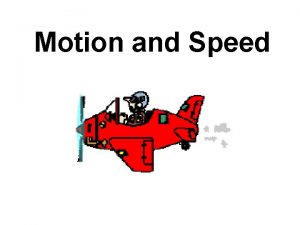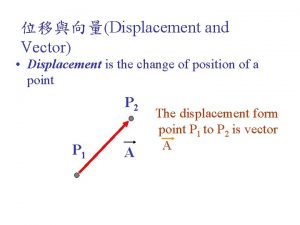Notes Section 2 1 DISPLACEMENT AND VELOCITY What

























- Slides: 25

Notes Section 2 -1 - DISPLACEMENT AND VELOCITY

What is the difference in distance and displacement? • Distance is the total distance traveled • Displacement is the shortest route from the starting to ending point. Your starting point is known as your origin.

Notes Section 2 -1 - DISPLACEMENT AND VELOCITY • A change in position in a particular direction is called a displacement, denoted x. • The SI unit for displacement is the meter. • If you are at initial position 1, xi , and you move to final position 2, xf , then the change in position is the final position - initial position. So your change in position (displacement) is 2 -1=1 x = xf – xi • displacement = (change in position) = final position - initial position

• If xf > xi , then x (displacement) is positive. If xi > xf , then x (displacement) is negative • A displacement is a vector quantity. This statement means that a displacement has magnitude (size), direction, and point of application. (The point of application is the place on the object where the force is applied. )

• Displacement is NOT equal to the distance traveled. • An example of distance traveled but with zero displacement is: • You drive from here to Atlanta and back. Even though you traveled a distance of 350 miles, your displacement is 0 miles - you ended where you began. • When an object is at rest, its displacement is zero.

• Displacement can be positive or negative. The sign indicates a difference in direction. • For example, if +175 represents 175 miles north, then -175 represents 175 miles south. • Use + and - in your equations to distinguish the different directions. • The 175 is the magnitude or size of the displacement. The + or - sign represents the direction, usually in an equation. • So, in the round trip to Atlanta, you headed north 175 miles (+175) and then turned around and headed south 175 miles (-175). So +175 + -175 = 0 miles (displacement)

i • The turtle above starts at Pi (initial position) and follows the dotted trail until the turtle reaches Pf (final position). • We can describe the turtle's displacement, x, as if the turtle traveled in a straight line from Pi to Pf. What is the turtle's displacement (magnitude and direction)? 10 cm, NE

For horizontal displacement, x is usually used. For vertical displacement, y is usually used. Time only has one direction, forward. Therefore, you only have to worry about magnitude or size of time. This type of quantity is called a scalar quantity. The time rate of motion is called speed When a motion is at a particular speed in a particular direction, the term velocity is used. velocity Velocity measures how fast something moves from one point to another.

You drive your car 45 mph on Upper Kingston Rd. Your speed is 45 mph. If you drive 45 mph heading north on Upper Kingston Rd, your velocity is 45 mph, north. Speed is the magnitude of velocity. (Magnitude is just a number without direction. ) Velocity is not the same as speed. Speed has magnitude but no direction, thus speed is a scalar quantity. Since velocities require magnitude and direction for their description and they combine appropriately, velocities are vector quantities.

Average velocity is the total displacement, ∆x, divided by the time interval, ∆t, during which the displacement occurred. If ∆x represents displacement during the time interval ∆t, the equation for average velocity vavg is: vavg = ∆x/ ∆t or vavg = xf-xi/ ∆t

When working problems, make sure your quantities’ units are the same before working the problem. For example, if velocity is in km/hr, your time should be in hours.

When you solve any problem in physics, you must show the following 5 steps 1. List your knowns (variable and number with units and direction/sign and show any conversions you have to make. ). 2. List your unknown. 3. Write your formula. 4. Show your number substitution into the equations. 5. Write your answer with the correct units and direction/sign. Please place a BOX around your final answer.

EXAMPLE 1: A doctor travels east from city A to city B, 75, 000 m in 1. 0 hour. What is the doctor’s average velocity in km/hr? Step 1: List your knowns (variable and number with units and direction/sign and show any conversions you have to make. ). Δx (displacement) = 75, 000 m x 1 km = 75 km/hr, E 1 hr 1000 m Δt = 1. 0 hour Step 2: List your unknown (What you are looking for). vavg? Step 3: Write your formula. vavg = x/ t Step 4: Show your number substitution vavg = 75 / 1 Step 5: Write your answer with the correct units and direction/sign. vavg = 75 km/hr, E

Ex. 2 The doctor continues the trip east to city C, which is 60. km from city B, at an average velocity of 100 km/hr. How long does the trip from city B to City C take? City B City C

Ex. 2 The doctor continues the trip east to city C, which is 60 km from city B, at an average velocity of 100 km/hr. How long does the trip from city B to City C take? Step 1: (list knowns) Δx = 60 km, E vavg =100 km/hr, E Step 2: (list unknowns) Δt = ? Step 3: (formula) vavg = x/ t Step 4: (substitute) 100 = 60 / t Step 5: (answer) t = 0. 6 hr

Ex. 3 You travel to the north for 20 minutes at an average velocity of 88 km/hr. (a) How far have you traveled? (b) What is your displacement? Step 1: (list knowns) Δt = 20 min x 1 hr/60 min = 0. 33 hr vavg = 88 km/hr, N Step 2: (list unknowns) Δx = ? Step 3: (formula) vavg = x/ t Step 4: (substitute) vavg = 88 km/hr, N 88 = x /. 33 Step 5: (answer) (a) x= 29 km (b) x = 29 km N

Motion • When an object changes its position, motion has occurred. – Distance- How far an object has moved. – Displacement- How far an object has moved in relation to its starting point. – Consider direction Example: Two runners travel along the same straight path in a straight line for 500 meters. At the end of the run their distances are the same but their displacements are different. How can this be so?

Example 1: An object moves from A (start) to D (end) along the red path as shown below. (Each square is 1 km) a) Find the total distance covered by the object b) Find the displacement of the object Total distance is ______ Total displacement is _______

Example 2 An object moves, along a line, from point A to B to C and then back to B again as shown in the figure below. a) Find the distance covered by the moving object. b) Find the magnitude of the displacement of the object. Total distance is _____ Total displacement is _____

Textbook Problems - Practice • Please answer questions v Q 1 -4 on page 44

1. Heather and Matthew walk with an average velocity of 0. 98 m/s eastward. If it takes them 34 min to walk to the store, what is their displacement? Step 1 Step 2 Step 3 Step 4 Step 5

2. If Joe rides his bicycle in a straight line for 15 min with an average velocity of 12. 5 km/h south, how far has he ridden? Step 1 Step 2 Step 3 Step 4 Step 5

3. It takes you 9. 5 min to walk with an average velocity of 1. 2 m/s to the north from the bus stop to the museum entrance. What is your displacement? Step 1 Step 2 Step 3 Step 4 Step 5

4. Simpson drives his car with an average velocity of 48. 0 km/h to the east. How long will it take him to drive 144 km on a straight highway? Step 1 Step 2 Step 3 Step 4 Step 5

Textbook Problems - Practice • Please answer questions v Q 1 -5 page 49
 Single displacement vs double displacement
Single displacement vs double displacement Displacement and velocity worksheet
Displacement and velocity worksheet Vibration displacement velocity acceleration
Vibration displacement velocity acceleration Displacement to velocity differentiate
Displacement to velocity differentiate Angular velocity to linear velocity
Angular velocity to linear velocity Initial velocity and final velocity formula
Initial velocity and final velocity formula Deceleration on velocity time graph
Deceleration on velocity time graph Darcy kroeker
Darcy kroeker Final velocity initial velocity acceleration time
Final velocity initial velocity acceleration time Instantaneous velocity vs average velocity
Instantaneous velocity vs average velocity Derivation of darcy's law
Derivation of darcy's law Angular velocity to tangential velocity
Angular velocity to tangential velocity Minimum velocity
Minimum velocity Speed, velocity and acceleration notes
Speed, velocity and acceleration notes Speed physics
Speed physics Motion section 2 velocity and momentum
Motion section 2 velocity and momentum Facteur g
Facteur g Healthy defense mechanisms
Healthy defense mechanisms John drove south 120 km at 60 km/h
John drove south 120 km at 60 km/h Radial cam and cylindrical cam
Radial cam and cylindrical cam A delivery truck travels 18 blocks north
A delivery truck travels 18 blocks north Cortical drift and displacement
Cortical drift and displacement Displacement vs distance
Displacement vs distance Venn diagram for a union b whole complement
Venn diagram for a union b whole complement Lvdt conclusion
Lvdt conclusion Displacement
Displacement

